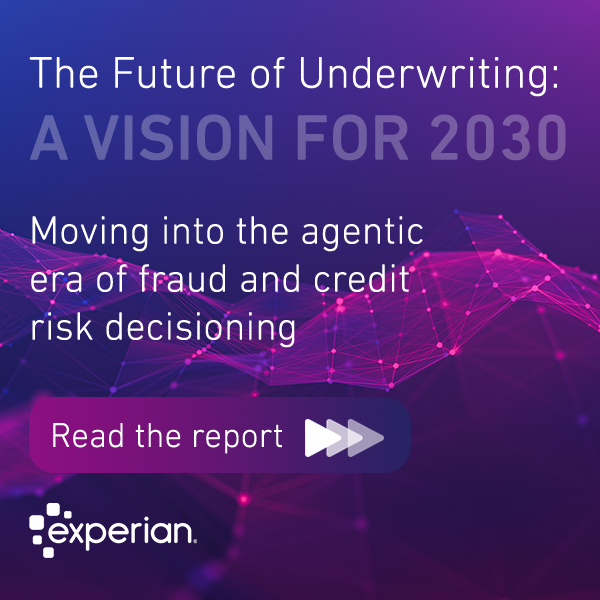Strategy & Operations
We look at the key business and operations challenges that keep business leaders moving forward.

Several months into the global pandemic and we know that general indicators of risk or stress don’t reveal enough about what’s really going on within your customer portfolios. We also know that most institutions heavily use statistical models in identifying and capturing risk drivers in order to make decisions. Active model calibration in current circumstances can have a measurable effect on approvals and expected loss within a few weeks of being implemented. Banks have managed through economic recessions and other stressed scenarios by adjusting various levers for liquidity and risk. None, however, have ever had to predict consumer behavior in a pandemic. How can credit risk executives regain control over disrupted risk models at a time of constant change? Four key actions to enact now for immediate and sustainable impact: 1. Increase the frequency of model health monitoring Many of the predictive models that financial institutions rely on aren’t stable enough to handle real-world disruptions. Nor are the models re-calibrated frequently enough to appropriately assess risk in the rapidly changing situation we currently face. Monitoring models on a quarterly basis isn’t enough, but that tends to be the average frequency for most financial institutions. Increasing the frequency of model monitoring processes and identifying the need for a change in models sooner leads to significant financial impact. Depending on the asset size of the institution and the specific use case, financial institutions can potentially save millions of dollars in lost revenue or avoided credit losses. Automating the process supports an increased frequency of monitoring while requiring less effort from your analytics team. 2. Carry out ex-ante stress testing for your models Businesses should consider using ex-ante stress testing, in light of the difficulty in maintaining the accuracy of model predictions in changing conditions as well as to meet the heavy governance requirements of new models before their actual use. Traditional ex-post processes are effective in simulating what would have happened historically had a new model been in place. This is an extremely valuable exercise but isn’t very helpful in the current stress environment which is both unique and highly uncertain. Risk managers would like to have a go-forward view on model performance for decisions being made right now, not just a look-back view on decisions made historically. Applying ex-ante stress testing allows us to simulate and analyze a range of possible outcomes based on changing macro conditions, evolving consumer behaviors, and other uncertainties like the quality of underlying data. 3. Make practical, short-term adjustments We’ve seen in previous economic downturns that models can rapidly become unfit for purpose, and the consequences may not be fully apparent until long after the start of the downturn. In such circumstances, you shouldn’t necessarily attempt to make changes that you expect to be robust for many months into the future. There’s a strong case for making adjustments that are designed to address temporary circumstances and reviewing them at an increased frequency. Some businesses are taking a conservative strategy by tightening their credit policies and decisioning strategies. Other businesses are overlaying their models with certain attributes. For example, one could look at the number of open inquiries in the past 30 days. Since we know that attribute is unstable, we can pair it with an attribute that will give you more population stability – such as average open inquiries over the past 6 months. 4. Setup for rapid re-calibration or re-build of models The decision to re-calibrate or re-build a model during the pandemic would depend on multiple factors including the business need and model use case, the performance of the existing model, and the confidence in the quality and relevance of data for the model build. However, it is important that financial institutions and other businesses are set up to rapidly update their models. They should be actively working on re-calibrating/re-building their models in a test environment, evaluate the impact, and be prepared to deploy. The ability to rapidly update models will be a key differentiator as businesses compete to grow their portfolios and manage losses during and in the aftermath of this pandemic. As with many other aspects of our lives, credit risk management is being challenged by the new reality created by a global pandemic. Whether our response is temporary, or whether the crisis is accelerating an existing trend to be more active in model management, we need to react to maximize our portfolio performance. At the end of the day, none of us have been through a pandemic but we know our models can still work. It’s all about model accuracy and model governance and reducing error rates. By increasing the frequency and efficiency of model monitoring and re-calibration, we can drive business outcomes with more impact than ever before. Learn more: For many organizations, navigating and recovering from these volatile times will remain top priorities as they begin strategizing for the future. Get details on accelerating your digital transformation.

In case you’ve missed these September headlines, we’ve compiled the top global news you need to stay in-the-know on the latest hot topics and insights from our experts. Transforming analytics into business impact CIO.com shares insight on using analytics to maximize business outcomes from IT leaders, including Shri Santhanam, Executive Vice President and General Manager of Global Analytics and AI. Global shudder: How businesses and customers are reacting to Covid-19 This MediaPost article covers global research findings on the impact of the Covid-19 pandemic, as well as perspective on the trends and what’s to come, from Steve Wagner, Global Managing Director of Decision Analytics. Experian touts Biocatch behavioral biometrics, adds Onfido face authentication for onboarding Biometric Update shares the latest on enhanced fraud detection for new account openings through a layered approach. Marika Vilen, SVP Platform Commercialization, Global Identity and Fraud, speaks to optimizing operations in today’s environment. Experian’s cloud-based solutions adapt to today’s evolving customer needs In this AiThority article covering cloud-based solutions for automating decisions, Donna DePasquale, General Manager, Executive Vice President of Global Decisioning, shares her perspective on businesses meeting the needs of today’s changing market. Why businesses need to meet the challenge of digital acceleration Steve Pulley, Managing Director of Data Analytics, offers global insights on continuing operations through an evolving digital marketplace impacted by Covid-19 in this Bdaily, United Kingdom, article. Stay in the know with our latest insights:

Download the report People’s changing behaviors to safeguard their health during the ongoing global Coronavirus pandemic has fueled a massive shift to digital channels. As people’s day-to-day routines and behaviors shift, so too is the attention on businesses to find new ways of staying relevant to their customers. Two-thirds of consumers are staying loyal to the businesses they preferred prior to Covid-19. 20% increase in overall online transactions – a 41% increase in online grocery shopping, 40% increase in applying for loans online, and a 22% increase in food delivery or takeout. 50% of consumers surveyed expect to increase their online transactions even more in the next 12-months. Uncertainty for what the next 6-12 months will hold has people and businesses vacillating between optimism and pessimism. Some likely contributing factors could be public health gains and setbacks for containing the virus, some businesses opening only to close again, and the prospect of some students returning to school in-person and while others go remote – and what all of that means for economic recovery. At the time of our study (June 30 -July 7, 2020), some lenders and retailers are demonstrating more confidence than others, while consumers - many already feeling depleted - are expecting and bracing for an expected second wave of Covid-19. Consumer financial hardship 65% of people believe their country has not yet recovered from the economic impact of the pandemic. 30% of consumers reported a decline in household income; India saw the largest household decline at 43%. The number of people having difficulty paying their bills has doubled since Covid-19 began. Businesses operational challenges 53% of businesses believe their operational processes have mostly or completely recovered since Covid-19 began. The U.S. (80%) is the most confident and Germany (27%) is the least. Top challenges faced by most businesses globally are the health and safety of their employees and customers, adjusting operations to support customers, and managing increased demand across channels and functions. 1 in 5 businesses surveyed lacks confidence in the effectiveness of their credit risk and collection decisions since Covid-19 began. Beyond their intense focus on the safety and security of their employees and customers, our research shows that businesses are making strategic investments – to give consumers greater access to goods and services, and to better manage their customer relationships. They’re also exploring automation and cloud technology to relieve operational constraints. Whether it’s a lender providing financial assistance to small businesses and loan re-payment options to customers or it’s a retailer providing essential supplies and services to people who need it most, helping people and delivering on expectations for secure, relevant customer experience is top of mind. Top areas of investment: strengthening the security of mobile and digital channels, new credit risk analytics, and the creation of artificial intelligence (AI) models and increasing digital customer acquisition and engagement. Top 3 solutions businesses believe will improve operational efficiency when supporting customers’ financial needs are automated decision management, cloud-based applications, and artificial intelligence. 60% of businesses plan to increase the budget for analytics and credit risk management. Businesses in the UK, U.S., Australia, and Spain have already increased the adoption of AI and advanced analytics. To solve for the lack of economic precedent, 51% of businesses say they’re asking customers to contribute more information/data and 49% say they’re exploring new or alternative data sources. Download Experian's Decision Analytics Global Insights Report July/August 2020 and learn more about the impact of Covid-19 on consumer behaviors and business strategies

In this episode of the Insights in Action podcast we talk to Neil Stephenson, Vice President of Strategic Client Development, about how businesses can address a lack of data. Following an earlier episode tackling business data challenges, we discuss getting value from the data your organization already has access to, tackling legacy software issues, the accelerated shift to customer-centric technology stacks, and an increase in industry partnerships to solve common challenges. Nearly a third of senior business leaders say they don't have enough data to get insights they need, or that the quality of the data they have access to is poor. We take a look at the three steps businesses need to take to address this challenge, starting with the quality of data already in the business. "We see a number of organizations that have pretty powerful data within their own business but don't leverage it as well as they could, so matching data together and making sure they've got a really strong view of their customer across all of their systems is really essential, and then having processes ongoing to make sure that they maintain that view whenever they touch the customer, whether that be through an online channel or face to face." Neil Stephenson, VP, Strategic Client Development Listen to the full episode here, and look back at the previous in the series, Solving key business data challenges - with Bill O'Connell, Experian Global Decision Analytics

Recently we commissioned Forrester Research to look into senior executives’ perceptions on key business data challenges and the importance of achieving a holistic view of their customers. This research uncovered that nearly a third of business leaders worldwide say they don't have enough data to get the insights they need or that the quality of the data they have access to is poor. While getting the type, quality, and amount of data right is paramount to success in your endeavors to create actionable insights that take your business to the next level, data alone is not enough. To get value from data, there's a whole ecosystem that needs to be in place that enables the business to create, manage and maintain a holistic view of the customer, create analytically driven insights into those customers, and deploy them into production environments that drive optimal customer actions and journeys. Organizations also have the opportunity to explore new data assets from traditional sources or those dynamically created in a myriad of places across mobile devices and the Internet of Things. There must be systems and procedures in place to continuously improve and assess these new data sources, by bringing them into analytical processes where insights are derived and predictive models generated. The critical task is then to seamlessly ingest and embed the data and models into production environments in a robust and compliant way. And that's got to be a continuous process. Otherwise, businesses will stagnate, and they will lose out to those competitors who are actively doing this. Addressing the lack of data your business needs to get actionable insights: Three practical steps Prior to even considering external or additional data sources, you need to get a solid understanding of the data you currently have access to within your organization, what value those data sets bring in and what are the gaps to be filled. You should also review your internal processes and technology stack to understand if further IT investment is required to create a more effective ecosystem. With the right tools and processes, you must be able to easily assess the uplift of new data sources in your analytics environment, as well as ingest those new data sources into production environments, to drive new models, run segmentation rules, and execute customer-centric actions. What are the three steps you need to take to get enough data to gain business insight you can take action on? Look at the quality of your internal data. We see a number of organizations that have powerful data in their own business but don't leverage it as well as they could. So matching data together, making sure that they've got a really, really strong view of that customer across all of their systems is really essential. And then having processes ongoing to make sure that they maintain that view whenever they touch the customer, whether it's through an online channel or face-to-face, so that they always know who that customer is, and they can match them to their existing relationship profile. Getting your internal data process correct is a foundational element to this whole piece. Understanding the value and role of new data. In terms of new data, it’s about understanding if that new data can actually add value to the business rather than plugging it into core systems straight away. You need to work with the vendor or the source of that data to get hold of a dataset, match it to your customers, and run analytical processes to identify whether the data adds value. If it does, consider what models or segmentations could you create from that data that'll actually drive value in the business.Identify the software and architectures you have in place that allow you to connect to data and drive that data into a tool that can dynamically apply models and rules in a heavily regulated environment. With the right toolset forming the bridge between your off-line analytics environment and your on-line production environment, you can leverage predictive data to continuously improve your customer-centric decisoning across the lifecycle for all of your portfolios.

The opportunistic nature of hackers means that a global crisis can create the perfect breeding ground for fraudulent activity, meaning businesses and consumers need to be even more vigilant. View Infographic

The interesting thing about fraud is that it’s always changing. Fraudsters are getting smarter, and fraud threats are constantly evolving. Businesses need to be agile and prepared to quickly shift their fraud strategies to stay a step ahead of emerging fraud threats. Traditionally, it's been very difficult for businesses to keep up – every time they see a shift, new fraud signals must be employed, which means looking at new intelligence signals in order to counter that fraud and then moving through a process of procurement and qualification, and then implementation and integration, of fraud services in order to manage the change. With time of the essence, businesses can no longer wait months to react. They need to be able to react in real-time. Biggest threats for 2020 Covid-19 has accelerated online payment transactions, making way for massive cyber security and data fraud concerns among banks and retailers. The idea of doing more digital business, picking up customers digitally, providing a great digital experience is going to be more and more important as we move through the pandemic. Even businesses which traditionally see most of their customer traffic through bricks and mortar might start to see that shift. All of this means that there is more opportunity for fraudsters to be part of the process and to take advantage of that digital interaction. The risk of fraud is going to increase as more people go digital – In part because of sheer numbers, and in part because more of the people who are going online now maybe doing so for the first time. So companies and consumers alike are less prepared for that kind of interaction. Account opening is likely to drop because of Covid-19, but we should expect to see a sharp increase in account take over fraud. There are a lot of people who are being forced to go online now to transact. They may need to turn to ecommerce. They may need to look at online banking to move their banking online. But the point is, they may never have gone online to perform these tasks before. Many vendors have been rapidly rolling out new technology solutions to help banks and retailers manage this new online demand, which has potentially exacerbated digital fragmentation, privacy concerns, and governance expectations. The importance of continuous risking and self-service The speed at which fraudsters adapt to new technology and behavior has always been a problem, but now that we are seeing sudden and unpredictable change, reacting at speed with new fraud strategies has never been more important for businesses. Typically, businesses need to move through validation, contract and then integration in order to do this – making for a long and tedious (not to mention expensive) process. The new release of CrossCore will pre-qualify fraud and intelligence services so that they are pre-integrated meaning that businesses can choose how they want their transactions to be processed, which fraud and identity services they want to use, and they can do so through simple self-service. There is also a feedback loop where reports are generated on how much fraud was detected. Businesses can access their feedback loop almost in real-time and see if their fraud strategies are working or not, and then adjust things as they go. Customer experience when all of your customers are online The ability to passively and strongly identify a customer is a difficult balance to strike when the goal is not to inconvenience the user. And now that most consumers are running their lives online, they demand not only a secure experience, but a convenient one too. To achieve this, a lot of signals about that person are collected. These range from device characteristics and who it is registered with, to behavior on the device and whether these signals match up to the same person. In order to process this data, the signal streams that come in must be considered and then almost in real-time, fraud analytics allow a decision to be made on whether the interaction is with a genuine person or a fraudster. To be able to reduce friction while passively and strongly identifying a person, advanced analytics becomes integral. More about how our latest upgrades can help your business

In many respects, the explosion in the type and volume of customer data businesses gather to facilitate security, ensure a convenient, user-friendly approach to customer interactions, and personalize interactions is a double-edged sword. In an era when businesses are awash in data, customers' expectations regarding its use continue to grow. Nonetheless, when it comes time to recognize a consumer by utilizing the data, there is a disconnect between how confident businesses are in their ability to recognize the consumer and the consumer's confidence in businesses' ability to do the same. In our latest Global Identity and Fraud Report, where input from over 6,500 consumers and 650 businesses worldwide was gathered, 95% of businesses expressed confidence in their ability to recognize their customers whereas only 55% of consumers reported that they don't feel recognized by businesses. So why do businesses feel they are recognizing their customers better than customers think they are? At the heart of the problem, many businesses fail to appreciate the risks and shortcomings associated with weak or no identity verification and customer authentication tools, including their inability to prevent criminal activity or offer seamless processes that minimize customer friction. And while businesses possess the means of gathering data from customers through a multitude of identity verification and authentication touchpoints, they sometimes struggle to develop an overarching picture of individual customers, in conjunction with their needs during each phase of the customer lifecycle. This, in turn, results in a myopic view of the customer, despite the existence of extensive data. A never-ending torrent of data Due to the rapid increases in the number of connected devices, there is exponential growth occurring in the amount of data generated, with some estimates predicting an excess of 79.5 zettabytes (or 79.5 billion terabytes) of generated data by 2025. With these facts in mind, many companies experience the shortcomings of big data solutions and their ability to make sense of the unprecedented growth in consumer data at the fingerprints. This inability to provide actionable insight means that what started as promising data lakes now resemble data swamps, meaning that companies possess unfathomable amounts of data but struggle with how to put it to good use. The security implications for business and consumers While businesses rush to embrace digitization by gathering all manner of data from customers at every stage of their journey, vast amounts of data continue to be exposed. Furthermore, as stated earlier, when it comes to customer engagement, there are expectations that businesses must meet regarding security, convenience, and personalization, yet many businesses struggle to understand the interrelationship between these three elements. In specific terms, as a customer interacts with a company, they provide additional data, with each interaction. This helps paint a more accurate picture of their identity and behaviors. In turn, this increasingly detailed, data-driven portrait improves an organization's ability to recognize them in subsequent interactions. Moreover, with a more detailed understanding of the customer, the need for burdensome security processes lessens, resulting in less friction for the customer. In a nutshell, security, convenience, and personalization form individual legs of the same stool. Consequently, failing to consider this fact, leads to isolated security measures, peppered throughout the customer lifecycle. For example, while browsing online, a customer may receive recommendations regarding the products or services they may like. However, when they access their account profile during the same session, the company may force them to reauthenticate their access. Using this example, since the company had sufficient data to personalize the customer's experience, in theory, at least, they also possessed sufficient information about the customer and their identity to grant unfettered access to their profile. Was there a genuine need to reauthenticate the customer in this scenario? At the heart of that interaction lies the customer's identity, which forms the basis for any interactions. When disparate systems capture various elements of a customer's digital identity, a mechanism must exist to aggregate the elements, to minimize the friction customers experience when interacting with businesses at different points in the lifecycle. And while relatively sophisticated CRM systems exist to memorialize customer preferences, due to their inability to capture a holistic view of the customer's identity and subsequent activity during all touchpoint in the customer lifecycle, they often fall short as in their ability to deliver a cohesive, consistent and appealing approach when it comes to security. The power of layers and analytics When fractured infrastructures are in place, businesses often subject their customers to a complicated and disjointed approach to security and risk requests, while simultaneously bombarding them with attempts to up-sell or cross-sell products and services. So, while the goal of data gathering and analysis should in part facilitate convenience, that is far from the customer experience when interacting with certain businesses. Conversely, when customer identity and recognition involves layers of data gathered from across business units, coupled with advanced analytics and quality identity verification tools, businesses can present a more compelling, user-friendly approach that minimizes the stress placed on the customer while providing a positive customer experience. With this approach in mind, businesses can do a great deal to foster engagement which is secure and trusted by the customer. Our research determined that 86 percent of businesses state that advanced analytics is a strategic priority. Yet only 67 percent of businesses consider the use of advanced analytics, like artificial intelligence, to be important for fraud prevention, whereas only 57 percent deem advanced analytics as important for identifying customers. Even fewer respondents see a reason to adopt a hybrid approach involving machine learning involving both unsupervised and supervised models with business rule logic – 45 percent globally and with the United States and Japan as the outliers at 58 percent. However, when businesses pursue the adoption of more sophisticated authentication strategies and advanced fraud detection tools, they will improve their ability to identify and their customers, reducing their exposure to risk and ultimately leading to increased trust. Trust is the linchpin for any transaction and while it's easy to underestimate the importance of trust, given how difficult it is to measure and maintain, without it consumers and businesses will part ways. In a world with no shortage of data, with the right tools and methodology in place, businesses can mitigate various forms of risk, refine the customer experience, and foster the trust needed to support a mutually beneficial relationship between businesses and the customers they serve.

The decisioning landscape is changing rapidly. In parallel to this, digital continues to redefine the customer experience with a big focus on removing friction from the customer journey. Mounting expectations around online customer experience mean that we are seeing a digital transformation both in terms of consumer interaction, and what the businesses are processing in the background. The front and back end are no longer mutually exclusive, and the driving force behind this transformation is digital, and it’s enabled by the cloud. How the pandemic has shifted priorities Before the Covid-19 pandemic took hold, businesses were well on their way to recognizing this. Digitizing more workflows while incorporating a truly customer-centric view was the goal of 2020. A Gartner report shows that in January, priorities for CIOs centered around Cloud and DevOps. This push to shorten the development lifecycle by combining software development and IT operations into a single discipline, alongside demand for Robotic Process Automation, using bots to focus on automating high volume repetitive tasks, were top of the list for businesses. By April, these priorities had changed. Businesses quickly shifted their focus to the pandemic, and with that, the need to enable remote or home working. But Cloud remains firmly within the top three. We look at why cloud-first decisioning remains critical to digital transformation, now more than ever. Why Cloud-first is even more important now Managing cash flow: When a CIO is in the cost optimization mode and trying to conserve cash, scaling back on the use of existing Cloud technology can afford immediate cost savings. Cloud cost for infrastructure of the service, or platform of the service, and even some software of the service is often tied to the business. The less usage, the more savings. When a CIO needs to implement new technologies in 2020, Cloud can offer the most cash flow optimized needs to do so. Less cash is spent upfront to acquire Cloud technology than to buy data center systems or licensed software. Business agility: Cloud technology makes it much easier to keep systems up to date and secure, alongside feature enhancements and new releases. The Cloud minimizes lengthy and costly delivery projects with solutions that can be deployed in weeks, not months and years. Customer journey: Many established market leaders are running digital transformation programs that re-orientate their business away from functional and product silos to focus on customer journeys enabled by Cloud services. Keeping it simple: Simplification is crucial. Simplifying the IT environment with Cloud services that eliminate the need to manage hardware and other infrastructure. Using Cloud-native architecture to support auto-scaling, zero downtime for upgrade. Security is paramount: The challenge to identify and fight fraud by analyzing behavior during the data capture process is ever-present. Software needs to evolve all the time to adapt to threats, and it needs to continuously update with new features to help businesses remain competitive. Businesses need to protect consumer digital accounts from Account Takeover threats while balancing consumer convenience. Cloud-first impacts all layers, from consumer interactions to data sourcing and processing, from fraud detection to identity verification, and at the heart of areas like credit and decisioning. Integrated decisioning, and decisioning that is governed and can be clearly explained to both the auditor and to the regulator is the goal of every business, and it is enabled by the cloud.

Over the past couple of months, every business, regardless of industry, has had to quickly find its bearings. This level of disruption is unprecedented; we may never see anything of this magnitude again in our lifetime. While urgent, the immediate needs created in the wake of the global pandemic shouldn’t be met with one-and-done solutions. It’s imperative that the solutions you offer not only enable your customers to manage the immediate crisis but also help you support them as they assimilate into the “new normal.” There’s therefore this added pressure for businesses to equip their teams with the necessary tools and knowledge to continue serving customers in a dynamic environment. It doesn’t take long to get left behind with new solutions, and new challenges, emerging on a regular basis. You have to keep up with the times so you can adapt your response to whatever is necessary and retain your value to your customers. How do you upskill your teams when traditional training is not an option? As Plato put it well before the Covid-19 pandemic turned our world upside down, a need or problem encourages creative efforts to overcome the challenge it presents. Recent research shows that companies that may have deferred their intended investment in training, are now resuming that commitment in order to meet new demands in this increasingly digital ecosystem: In an ILX Group survey, 51 percent of HR decision-makers said that ongoing digital learning has a direct effect on boosting employee morale, satisfaction, and longevity. A study published in the Journal of Applied Psychology found that microlearning makes learning 17 percent more effective, and Software Advice reports that microlearning engages over 50 percent of participants. A study conducted by Brandon Hall found that digital learning requires 40 to 60 percent less employee time than classroom training. The Research Institute of America reports that learning retention rates improve from 8 to 10 percent for face-to-face training to 25 to 60 percent for digital learning. IBM research found that for every dollar you invest in digital learning, the result is $30 in productivity, mostly because employees save a lot of time through online learning and are able to resume work and apply the new skills faster. Taking advantage of technology to make knowledge accessible at the point of need As with the majority of our day-to-day activities, learning solutions now must be facilitated outside of a physical environment, such as the workplace or classroom. Having access to digital knowledge and training resources gives your teams enhanced flexibility to keep their skills up to date at their own pace, whether they are at home or in the office. Over the years, we’ve seen that offering learners training in multiple formats improves the overall success of the training, including enabling greater flexibility – offering different modalities is more likely to meet learner’s preferences - work clarity and job satisfaction. While your business may still be operating in a fog of uncertainty, ensuring access to the right tools and knowledge would give your team higher confidence in their ability to be of service, minimizing business disruption during this turbulent time.

There isn’t a roadmap for navigating through times like these but the reality can’t be ignored. The effects of the pandemic will forever change how lending businesses operate and engage with customers long after the health crisis is over. Businesses and consumers have basically been pushed to engage with each other digitally en masse and there are practical challenges that banks and financial services are faced with today that need to be addressed. Some of these issues require short-term adjustments to manage things like increased volume of call center inquiries with a remote workforce. But other issues have put a spotlight on massive areas in need of modernization such as the management of liquidity and risk. Businesses need to think critically about how they will use technology and innovation to transform their credit risk and fraud operations to better serve customers across channels. Here are three cost-effective strategies that will connect you with your customers faster and in their greatest time of need – now and post-Covid. Respond to the change in a fair and consistent way. Regulatory bodies and credit risk policies are designed to prevent against unfair lending decisions. But when federal funding to provide stimulus and pressure for payment holidays take hold, it’s creating a lot of uncertainty for how to handle its impact on the portfolio. Strong operational decision management capabilities provide businesses a way to quickly test new strategies and deploy them. In fact, this isn’t all that new to large banks and financial institutions. But smaller banks have considered it “out-of-reach”, a perception that isn’t true nor acceptable at time when there are solutions available on the cloud. A huge benefit to moving your strategy management to the cloud is the ability to flex up or flex down your costs at time when balancing your cash flow and discretionary spend or technology investments is a top priority. Flexing up for increased customer demand to handle hardship or government-backed small business loans is going to be fundamental during this crisis, and where cloud-based strategy management will really pay off. A further benefit is that you remove the complexity of the IT infrastructure and get access to enhanced features whether it’s new data sources, models, or improvements to security. This is especially important as we all know, necessity is the mother of all innovation and there will be a need to get more from your current software without wanting to replace legacy systems. Models that drive decisioning still work. Despite the lack of historical precedent for the current scenario, data and analytics are very effective in this rapidly changing environment. For example, many people are facing financial hardship right now which means businesses need a way to efficiently receive and process applications that out-sort those in need of special servicing. Understanding who was headed into default prior to Covid-19 and who is experiencing short-term default because of this situational unemployment is key for delivering the right products and terms. In fact, if there is anything transferrable from the 2007/08 recession (which was entirely different from what the world is experiencing now), is that you need to use analytics to discern habits from new behaviors and ensure you don’t use vanilla treatments for both. Businesses will undoubtedly see their analytics teams overstretched during this period, so now is the time to reduce the manual load and invest in machine learning and AI. These advanced tools can offer the fastest and best results for getting the right analytical capabilities or models in place. For larger organizations, this will mean having the agility to rapidly update and deploy existing models, and for smaller ones, it will mean building this from the ground up. To help, our data scientists have recently identified over 140 consumer credit attributes that can offer some insights even in unprecedented times to: Identify financially stressed customers earlierPredict future payment behavior accuratelyRespond to profile changes faster Re-define the customer journey. Businesses should remove all unnecessary friction by inspecting the customer journey right down to every click and interaction. Why is this important? It remains to be seen exactly what customer behaviors and expectations will take hold but it’s likely to leave a lasting imprint. The contactless way consumers engage with businesses puts more and more pressure on how effectively they’re using data and customer insights to make their interaction relevant. Relevance in the form of – Do I recognize that this is my customer enrolling in or accessing their account(s) or is it suspicious?What do I know about this customer to proactively adjust or deliver a contextually appropriate offer or the terms they will accept?Are there signs of “mental drop-out” or abandonment that signal improvements to the experience are needed?How can I deliver the same experience across channels and simplify complex transactions, like enrollment?Do my customers feel secure and do they trust my business to protect their information? This is an opportunity for organizations to reflect upon how they do business, both in terms of how effectively they operate, but also in light of consumers changing expectations about the way that they want to engage with the wider community. Beyond the data, having an appropriate and empathetic response to customers who feel stuck can increase rapport, build loyalty, and open new possibilities to work together in the future. Related articles: Digitally managing your at-risk customers most impacted by Covid-19Proactively restructuring debt to help improve customer affordabilityPredicting customer payment behavior in a time of extreme uncertaintyStay connected to your customers in times of unexpected change

The speed at which the world is feeling the impact of Covid-19 is unparalleled. Because of this customer affordability has shifted into the unknown and businesses are trying to react quickly to assess customer risk in a brand-new context, albeit a temporary one. We look at the five key areas businesses should be considering when it comes to customer affordability. 1. Looking to insights The last financial crisis taught us that the first line of defense for many organizations, large and small, is to move straight into proactive debt restructuring to reduce the volume of customers who would otherwise fall immediately into debt collection. This crisis is no different, but identifying those in hardship, restructuring debt at speed, and in line with restricted policies are where businesses should be focusing to successfully tackle this. 2. Keeping regulators front of mind As a result of the last downturn, many financial regulators are placing a much higher weight of responsibility on lenders to make fair and transparent lending decisions when it comes to affordability. Not just when it comes to new lending, but also how they act and behave within collections. These rules are not going to be relaxed, so it’s important that businesses continue to prove that they remain compliant. 3. Predicting what’s to come Anticipating arrears before they happen, and at speed, is fundamental to managing the restructure of debt effectively. Especially where traditional data sources provide less predictive value. For businesses without advanced and automated debt restructure or collections-based program to begin with, this is an opportunity to develop something that will carry them through this time of crisis and beyond. 4. Harnessing analytics and AI Thinking predictively means getting the right analytical capabilities or models in place, ideally harnessing Machine Learning and AI to get the fastest and best results. For larger organizations, this will mean having the agility to rapidly update and deploy existing models, and for the less mature, it will mean building this from the ground up (but quickly). Businesses will undoubtedly see their analytics teams overstretched during this period, so now is the time to reduce the manual load and invest in these capabilities. 5. Automation for demand control Making sure customers can deal with organizations digitally will be critical to maintaining customer experience. It’s just as important to ensure that channels are integrated and automated in the backend. Businesses are looking to omni-channel digital solutions to help feed new demand through the funnel without having the added complication of a restricted workforce. It has never been more important to automate. More on Decision Analytics




